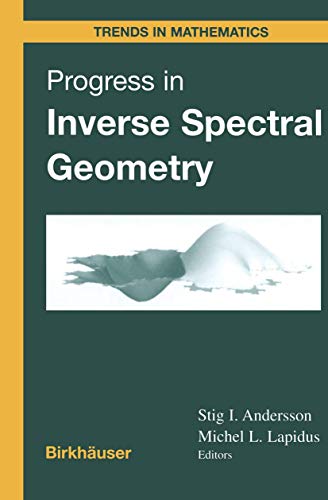Forum Legend
Member
LEVEL 1
45 XP

Free Download Progress in Inverse Spectral Geometry by Stig I. Andersson, Michel L. Lapidus
English | PDF | 1997 | 202 Pages | ISBN : 376435755X | 26 MB
most polynomial growth on every half-space Re (z) ::::: c. Moreover, Op(t) depends holomorphically on t for Re t > O. General references for much of the material on the derivation of spectral functions, asymptotic expansions and analytic properties of spectral functions are [A-P-S] and [Sh], especially Chapter 2. To study the spectral functions and their relation to the geometry and topology of X, one could, for example, take the natural associated parabolic problem as a starting point. That is, consider the 'heat equation': (%t + p) u(x, t) = 0 { u(x,O) = Uo(x), tP which is solved by means of the (heat) semi group V(t) = e- ; namely, u(·, t) = V(t)uoU· Assuming that V(t) is of trace class (which is guaranteed, for instance, if P has a positive principal symbol), it has a Schwartz kernel K E COO(X x X x Rt,E* ®E), locally given by 00 K(x,y; t) = L>-IAk(~k ® 'Pk)(X,y), k=O for a complete set of orthonormal eigensections 'Pk E COO(E). Taking the trace, we then obtain: 00 tA Op(t) = trace(V(t)) = 2::>- k. k=O Now, using, e. g. , the Dunford calculus formula (where C is a suitable curve around a(P)) as a starting point and the standard for malism of pseudodifferential operators, one easily derives asymptotic expansions for the spectral functions, in this case for Op.
Buy Premium From My Links To Get Resumable Support,Max Speed & Support Me
FileBoom
s3biw.zip
Rapidgator
s3biw.zip.html
NitroFlare
s3biw.zip
Uploadgig
s3biw.zip
Fikper
s3biw.zip.html
Links are Interchangeable - Single Extraction
DownGX's SIGNATURE
